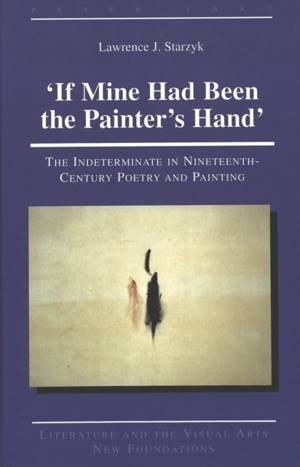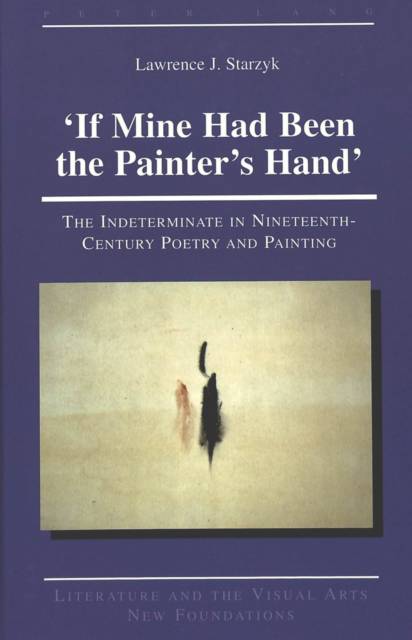
- Afhalen na 1 uur in een winkel met voorraad
- Gratis thuislevering in België vanaf € 30
- Ruim aanbod met 7 miljoen producten
- Afhalen na 1 uur in een winkel met voorraad
- Gratis thuislevering in België vanaf € 30
- Ruim aanbod met 7 miljoen producten
Zoeken
'If Mine Had Been the Painter's Hand'
The Indeterminate in Nineteenth-Century Poetry and Painting
Lawrence J Starzyk
€ 64,45
+ 128 punten
Omschrijving
This study examines the role of indeterminacy - what Chesterton called «the final skepticism which can find no floor to the universe» - in nineteenth-century British art. Beginning in 1806 with Wordsworth's questioning of the essential ground and companionableness of things and concluding with Hardy's dramatization in Wessex Poems of the treacherous relationship between the word and the image, 'If Mine Had Been the Painter's Hand' chronicles the growing sense of the antagonism of things as evidenced in the irreconcilable tension between the visual and the verbal. The writers examined here - among them, Tennyson, Browning, Arnold, and Lizzie Siddal - rely in varying degrees and at critical junctures in their artistic careers on the pictorial to forge analogs as evidence of the kindredness of things. Their failure testifies to their sense that all is, as De Quincey observed, «irrelate, » indeterminate.
Specificaties
Betrokkenen
- Auteur(s):
- Uitgeverij:
Inhoud
- Aantal bladzijden:
- 299
- Taal:
- Engels
- Reeks:
- Reeksnummer:
- nr. 13
Eigenschappen
- Productcode (EAN):
- 9780820440637
- Verschijningsdatum:
- 1/03/1999
- Uitvoering:
- Hardcover
- Formaat:
- Genaaid
- Afmetingen:
- 160 mm x 230 mm
- Gewicht:
- 539 g

Alleen bij Standaard Boekhandel
+ 128 punten op je klantenkaart van Standaard Boekhandel
Beoordelingen
We publiceren alleen reviews die voldoen aan de voorwaarden voor reviews. Bekijk onze voorwaarden voor reviews.








